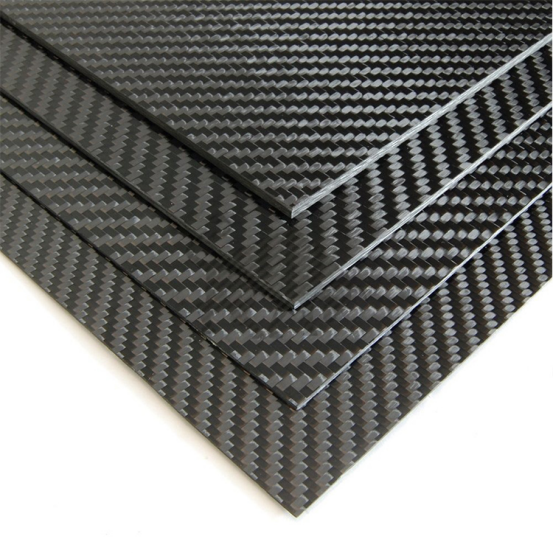Carbon fiber is a fiber material with a carbon content of more than 95%. It has excellent mechanical, chemical, electrical and other excellent properties. It is the “king of new materials” and a strategic material that is lacking in military and civilian development. Known as “Black Gold”.
The production line of carbon fiber is as follows:
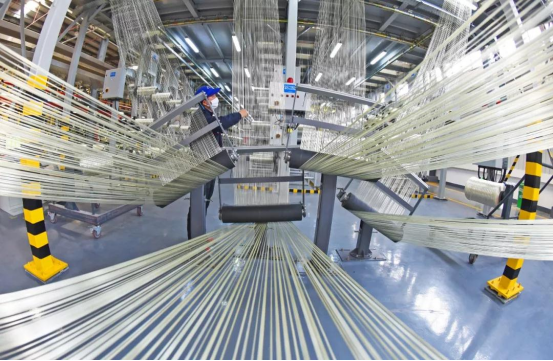
How is the slender carbon fiber made?
The carbon fiber production process technology has developed so far and has matured. With the continuous development of carbon fiber composite materials, it is more and more favored by all walks of life, especially the strong growth of aviation, automobile, rail, wind power blades, etc. and its driving effect, the development of carbon fiber industry. The prospects are even broader.
The carbon fiber industry chain can be divided into upstream and downstream. Upstream usually refers to the production of carbon fiber-specific materials; downstream usually refers to the production of carbon fiber application components. Companies in between upstream and downstream can think of them as equipment providers in the carbon fiber production process. As shown in the figure:
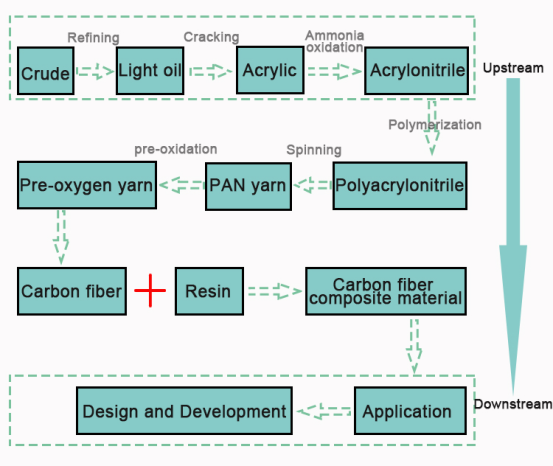
The whole process from raw silk to carbon fiber upstream of the carbon fiber industry chain needs to go through processes such as oxidation furnaces, carbonization furnaces, graphitization furnaces, surface treatment, and sizing. The fiber structure is dominated by carbon fiber.
The upstream of the carbon fiber industry chain belongs to the petrochemical industry, and acrylonitrile is mainly obtained through crude oil refining, cracking, ammonia oxidation, etc.; Polyacrylonitrile precursor fiber, carbon fiber is obtained by pre-oxidizing and carbonizing the precursor fiber, and carbon fiber composite material is obtained by processing carbon fiber and high-quality resin to meet application requirements.
The production process of carbon fiber mainly includes drawing, drafting, stabilization, carbonization, and graphitization. As shown in the figure:

Drawing: This is the first step in the production process of carbon fiber. It mainly separates the raw materials into fibers, which is a physical change. During this process, the mass transfer and heat transfer between the spinning liquid and the coagulation liquid, and finally PAN precipitation. Filaments form a gel structure.
Drafting: requires a temperature of 100 to 300 degrees to operate in conjunction with the stretching effect of oriented fibers. It is also a key step in the high modulus, high reinforcement, densification, and refinement of PAN fibers.
Stability: The thermoplastic PAN linear macromolecular chain is transformed into a non-plastic heat-resistant trapezoidal structure by the method of heating and oxidation at 400 degrees, so that it is non-melting and non-flammable at high temperature, maintaining the fiber shape, and the thermodynamics is in a stable state.
Carbonization: It is necessary to drive out non-carbon elements in PAN at a temperature of 1,000 to 2,000 degrees, and finally generate carbon fibers with a turbostratic graphite structure with a carbon content of more than 90%.
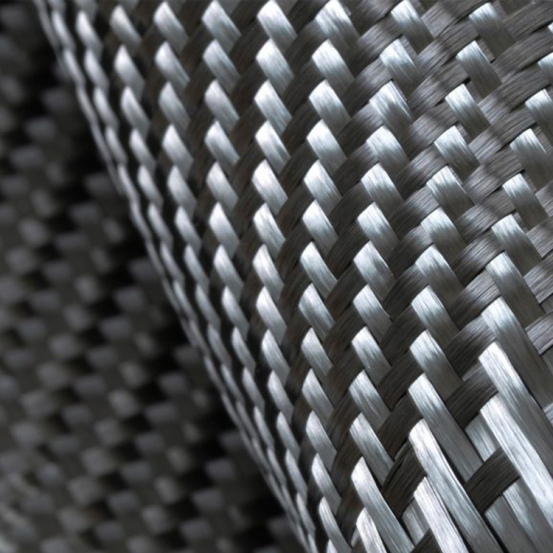
Graphitization: It requires a temperature of 2,000 to 3,000 degrees to convert amorphous and turbostratic carbonized materials into three-dimensional graphite structures, which is the main technical measure to improve the modulus of carbon fibers.
The detailed process of carbon fiber from the raw silk production process to the finished product is that the PAN raw silk is produced by the previous raw silk production process. After pre-drawing by the wet heat of the wire feeder, it is sequentially transferred to the pre-oxidation furnace by the drawing machine. After being baked at different gradient temperatures in the pre-oxidation furnace group, oxidized fibers are formed, that is, pre-oxidized fibers; the pre-oxidized fibers are formed into carbon fibers after passing through medium-temperature and high-temperature carbonization furnaces; the carbon fibers are then subjected to final surface treatment, sizing, drying and other processes to obtain carbon fiber products. . The whole process of continuous wire feeding and precise control, a little problem in any process will affect the stable production and the quality of the final carbon fiber product. Carbon fiber production has a long process flow, many technical key points, and high production barriers. It is an integration of multiple disciplines and technologies.
The above is the manufacture of carbon fiber, let’s take a look at how carbon fiber fabric is used!
Processing of carbon fiber cloth products
1. Cutting
The prepreg is taken out from the cold storage at minus 18 degrees. After awakening, the first step is to accurately cut the material according to the material diagram on the automatic cutting machine.
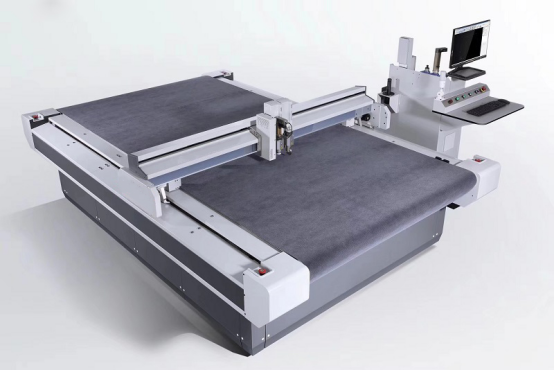
2. Paving
The second step is to lay prepreg on the laying tool, and lay different layers according to the design requirements. All processes are carried out under laser positioning.
3. Forming
Through an automated handling robot, the preform is sent to the molding machine for compression molding.
4. Cutting
After forming, the workpiece is sent to the cutting robot workstation for the fourth step of cutting and deburring to ensure the dimensional accuracy of the workpiece. This process can also be operated on CNC.
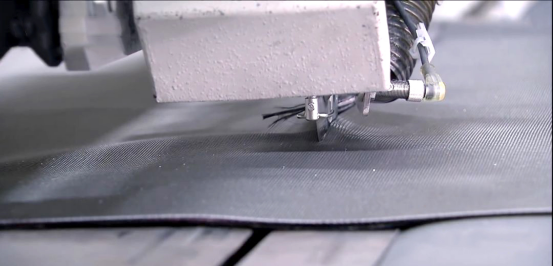
5. Cleaning
The fifth step is to perform dry ice cleaning at the cleaning station to remove the release agent, which is convenient for the subsequent glue coating process.
6. Glue
The sixth step is to apply structural glue at the gluing robot station. The gluing position, glue speed, and glue output are all accurately adjusted. Part of the connection with the metal parts is riveted, which is carried out at the riveting station.
7. Assembly inspection
After the glue is applied, the inner and outer panels are assembled. After the glue is cured, blue light detection is performed to ensure the dimensional accuracy of keyholes, points, lines, and surfaces.
Carbon fiber is more difficult to process
Carbon fiber has both the strong tensile strength of carbon materials and the soft processability of fibers. Carbon fiber is a new material with excellent mechanical properties. Take carbon fiber and our common steel as an example, the strength of carbon fiber is around 400 to 800 MPa, while the strength of ordinary steel is 200 to 500 MPa. Looking at toughness, carbon fiber and steel are basically similar, and there is no obvious difference.
Carbon fiber has higher strength and lighter weight, so carbon fiber can be called the king of new materials. Because of this advantage, during the processing of carbon fiber reinforced composites (CFRP), the matrix and fibers have complex internal interactions, making their physical properties different from those of metals. The density of CFRP is much smaller than that of metals, while the strength is greater than most metals. Because of the inhomogeneity of CFRP, fiber pull-out or matrix fiber detachment often occurs during processing; CFRP has a high heat resistance and wears resistance, which makes it more demanding on the equipment during processing, so A large amount of cutting heat is generated in the production process, which is more serious for equipment wear.
At the same time, with the continuous expansion of its application fields, the requirements are becoming more and more delicate, and the requirements for the applicability of materials and the quality requirements for CFRP are becoming more and more stringent, which also causes the processing cost to rise.
Processing of carbon fiber board
After the carbon fiber board is cured and formed, post-processing such as cutting and drilling is required for precision requirements or assembly needs. Under the same conditions such as cutting process parameters and cutting depth, selecting tools and drills of different materials, sizes and shapes will have very different effects. At the same time, factors such as the strength, direction, time, and temperature of the tools and drills will also affect the processing results.
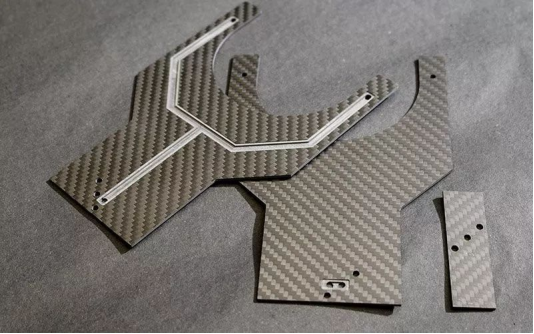
In the post-processing process, try to choose a sharp tool with diamond coating and a solid carbide drill bit. The wear resistance of the tool and the drill bit itself determines the quality of processing and the service life of the tool. If the tool and drill bit are not sharp enough or used improperly, it will not only accelerate the wear and tear, increase the processing cost of the product, but also cause damage to the plate, affecting the shape and size of the plate and the stability of the dimensions of the holes and grooves on the plate. Causes layered tearing of the material, or even block collapse, resulting in the scrapping of the entire board.
When drilling carbon fiber sheets, the faster the speed, the better the effect. In the selection of drill bits, the unique drill tip design of the PCD8 face edge drill bit is more suitable for carbon fiber sheets, which can better penetrate carbon fiber sheets and reduce the risk of delamination.
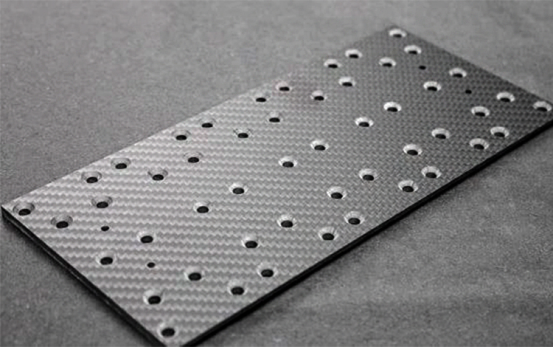
When cutting thick carbon fiber sheets, it is recommended to use a double-edged compression milling cutter with a left and right helical edge design. This sharp cutting edge has both upper and lower helical tips to balance the axial force of the tool up and down during cutting. , to ensure that the resultant cutting force is directed to the inner side of the material, so as to obtain stable cutting conditions and suppress the occurrence of material delamination. The design of the upper and lower diamond-shaped edges of the “Pineapple Edge” router can also effectively cut carbon fiber sheets. Its deep chip flute can take away a lot of cutting heat through the discharge of chips during the cutting process, so as to avoid damage to the carbon fiber. sheet properties.
01 Continuous long fiber

Product features: The most common product form of carbon fiber manufacturers, the bundle is composed of thousands of monofilaments, which are divided into three types according to the twisting method: NT (Never Twisted, untwisted), UT (Untwisted, untwisted), TT or ST (Twisted, twisted), of which NT is the most commonly used carbon fiber.
Main application: Mainly used for composite materials such as CFRP, CFRTP or C/C composite materials, and the application fields include aircraft/aerospace equipment, sporting goods and industrial equipment parts.
02 Staple Fiber Yarn
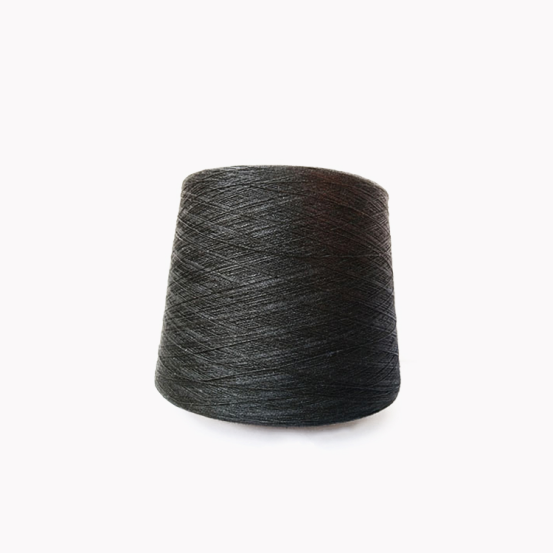
Product features: short fiber yarn for short, yarns spun from short carbon fibers, such as general-purpose pitch-based carbon fibers, are usually products in the form of short fibers.
Main uses: heat insulation materials, anti-friction materials, C/C composite parts, etc.
03 Carbon Fiber Fabric
Product features: It is made of continuous carbon fiber or carbon fiber spun yarn. According to the weaving method, carbon fiber fabrics can be divided into woven fabrics, knitted fabrics and non-woven fabrics. At present, carbon fiber fabrics are usually woven fabrics.
Main application: The same as continuous carbon fiber, mainly used in composite materials such as CFRP, CFRTP or C/C composite materials, and the application fields include aircraft/aerospace equipment, sporting goods and industrial equipment parts.
04 Carbon Fiber Braided Belt
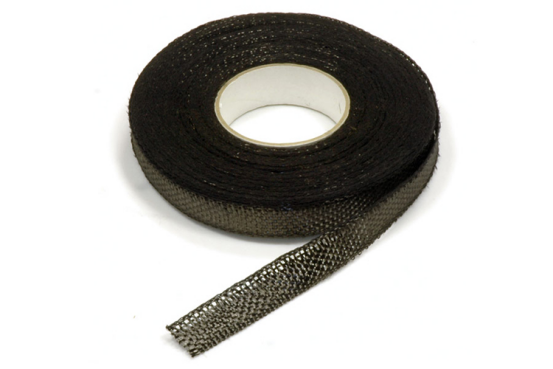
Product features: It belongs to a kind of carbon fiber fabric, which is also woven from continuous carbon fiber or carbon fiber spun yarn.
Main use: Mainly used for resin-based reinforcing materials, especially for the production and processing of tubular products.
05 Chopped carbon fiber
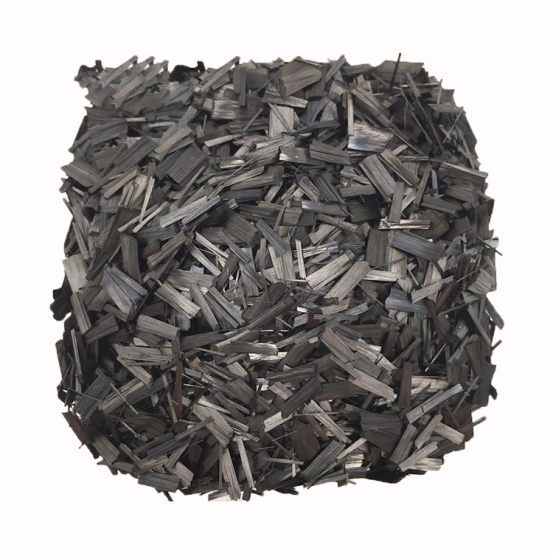
Product features: Different from the concept of carbon fiber spun yarn, it is usually prepared from continuous carbon fiber through chopped processing, and the chopped length of the fiber can be cut according to customer needs.
Main uses: Usually used as a mixture of plastics, resins, cement, etc., by mixing into the matrix, the mechanical properties, wear resistance, electrical conductivity and heat resistance can be improved; in recent years, the reinforcing fibers in 3D printing carbon fiber composites are mostly chopped carbon fibers. main.
06 Grinding carbon fiber
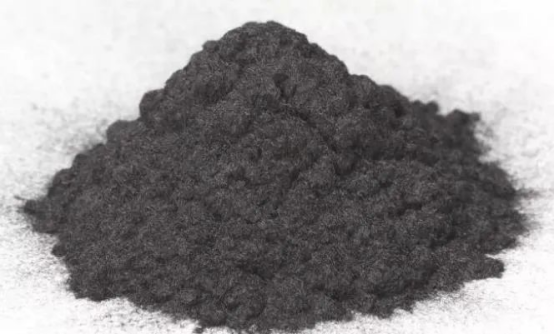
Product features: Since carbon fiber is a brittle material, it can be prepared into powdered carbon fiber material after grinding, that is, grinding carbon fiber.
Main application: similar to chopped carbon fiber, but rarely used in cement reinforcement; usually used as a compound of plastic, resin, rubber, etc. to improve the mechanical properties, wear resistance, electrical conductivity and heat resistance of the matrix.
07 Carbon fiber mat
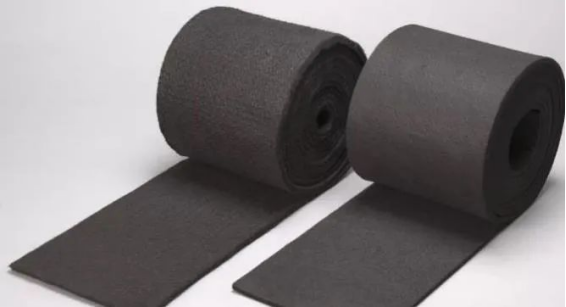
Product features: The main form is felt or mat. First, the short fibers are layered by mechanical carding and other methods, and then prepared by needle punching; also known as carbon fiber non-woven fabric, it belongs to a kind of carbon fiber woven fabric. Main uses: thermal insulation materials, moulded thermal insulation material substrates, heat-resistant protective layers and corrosion-resistant layer substrates, etc.
08 Carbon fiber paper
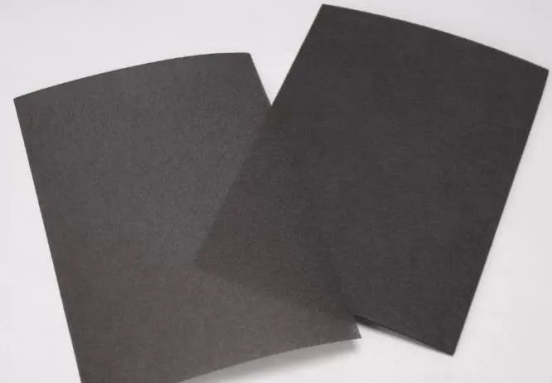
Product features: It is prepared from carbon fiber by dry or wet papermaking process.
Main uses: anti-static plates, electrodes, speaker cones and heating plates; hot applications in recent years are new energy vehicle battery cathode materials, etc.
09 Carbon fiber prepreg
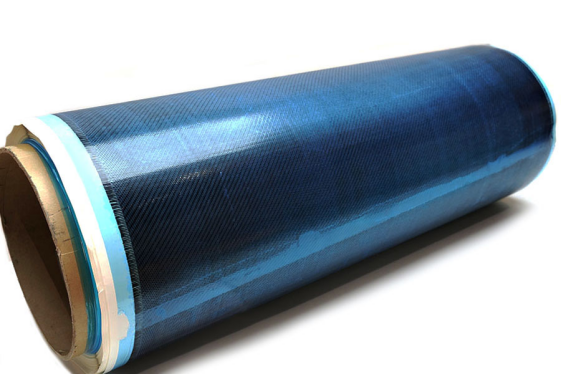
Product features: a semi-hardened intermediate material made of carbon fiber impregnated thermosetting resin, which has excellent mechanical properties and is widely used; the width of carbon fiber prepreg depends on the size of the processing equipment, and common specifications include 300mm, 600mm, and 1000mm width prepreg material.
Main application: aircraft/aerospace equipment, sporting goods and industrial equipment, etc.
010 carbon fiber composite material
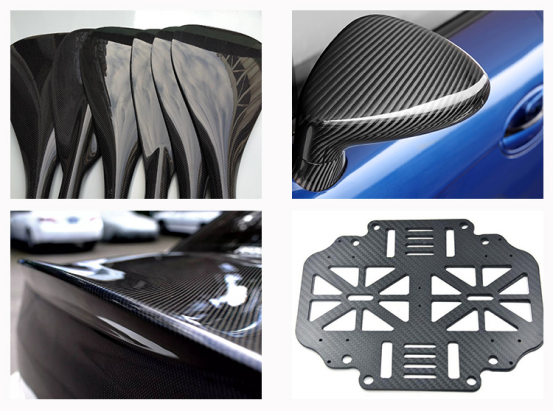
Product features: Injection molding material made of thermoplastic or thermosetting resin mixed with carbon fiber, the mixture is added with various additives and chopped fibers, and then undergoes a compounding process.
Main application: Relying on the material’s excellent electrical conductivity, high rigidity and lightweight advantages, it is mainly used in equipment casings and other products.
We also produce fiberglass direct roving, fiberglass mats, fiberglass mesh, and fiberglass woven roving.
Contact us :
Phone number:+8615823184699
Telephone number: +8602367853804
Email:marketing@frp-cqdj.com
Post time: Jun-01-2022


